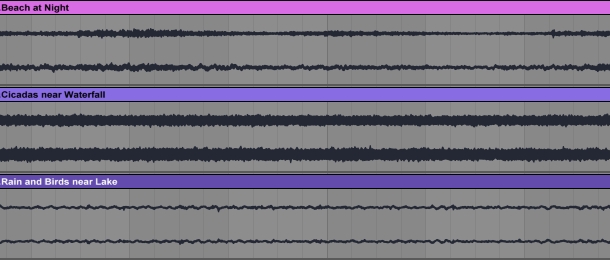
Recently, we dropped a brand new collection of field recordings - that is, environmental sound recordings made outside the studio - recorded in a variety of places from sweltering river deltas to austere mountains out in Southeast Asia. It's called Eastern Scenes and you'd be forgiven for thinking it was only useful for post production and soundtrack work - however, today I'm going to try something a little different and show you how you can use this and any other set of field recordings to make a unique, textural drum beat.
To begin, I need to choose some sounds to chop up - this means searching through the field recordings to find sounds with a few specific characteristics. I want to end up with a set of short slices from these recordings, which roughly equate to the usual suspects present in a beat - kick, snare and hi hats.
You'll have the chance to download the sounds used in my tutorial below, plus a few loop extras for good measure - let's sift through the sounds and get started!
Kick: Sculpting Materials
First up is to search for something I can turn into a kick, for which I'd say the main characteristic I want to listen out for is some nice bass depth! Having listened through the files in Eastern Scenes, the recording I've chosen for this purpose is the one above: 'Rain and Birds near Lake'. As you can hear, the recording contains the distant sound of a motor engine, injecting a fragment of rumbling bass goodness into the recording which is exactly what I need to start making my kick:
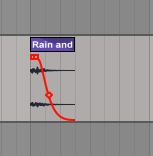
Now I've cut out the section of the field recording I want to work with, I can start sculpting. To mimic the decay of a kick drum hit, I've applied a bit of a fade to the sample - also known as applying an amplitude envelope. Here's how this sounds:
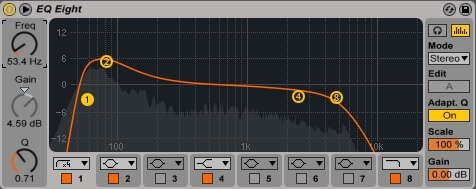
Next, I want to apply some filtering and EQ to better shape the sound to my needs. I've boosted the bass around 80Hz, while high passing with a steep curve at about 55Hz to cut out any infrasonic bass - I've also used a high shelf to take down some of the upper mids/treble beyond 1.15kHz. Finally, I've added a low pass filter from around 1.4kHz, lessening the impact of the sound of all that bright rain and focussing in more on the low end of the recording.

To finish, I've applied some further enveloping with a transient shaping plugin (I used NI's Transient Master but you can sub in your own plugin here) to give the hit some more bite. As you can see, I've used quite a lot of attack - you need to be quite strong on the processing to bend these kinds of sounds to your will, at the same time as not using so many effects as to lose all the lovely detail that will make this textural kick sound unique!
Here's the finished kick sound:
It's pretty unusual but it contains everything I need and will stand out from the majority of kicks out there!
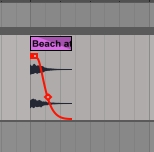
Snare: Making Waves
To create a snare sound, I need to look for a recording with a noisy, calamitous feel to it. And the 'Beach at Night' recording gives me just that - here it is:
If I snip a bit out a section right in the middle of the sound of a crashing wave, I'll get the initial attack plus a bit of the decay I need to mimic a snare, ready-made within the sample itself. Here's the part I've chopped out:
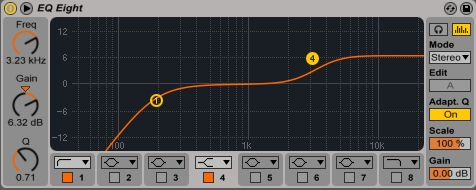
Applying some high pass filtering around 200Hz to cut out the lows and adding a high shelf boost to enhance the brightness at the very top of the sound's spectrum, along with some transient shaping similar to my kick processing, I get this:
This enveloped noise actually has a little bit of an 808-style sound to it, don't you think' Except that with this sound, there's a fragment of a cricket's chirrup laced into the tail, giving it that weird and wonderful twist! I would never have thought to design such a texture into this sound if I was making it with a synth or drum machine, so this process really is giving me something totally unique and without working up much of a sweat!
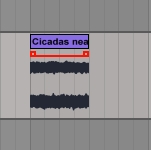
Hi Hats: Insect Percussion
Now for the hi hats, I'm going to try something a little bit different still. If I were to cut out a tiny little snippet from a recording and trigger it at 1/8th or 1/16th notes, it would probably sound like a hi hat but also really mechanical. This would be a shame as these field recordings contain so much real-world vitality that I could take advantage of, creating a hat pattern that subtly shifts over time. Here's a section from another recording that I think could work:
The sound of the cicadas in this file, 'Cicadas near Waterfall', actually have enough regularity in their timing to make for a nice little hi hat loop, no programming required! I've cut out a snippet containing a series of precisely 8 individual rhythmic sounds - seeing as I haven't made my drum beat yet, I can cheat a little and just match my tempo to the cicadas, which works out at a tidy 84BPM! Of course, I could pitch this sample around to change the tempo also but I'm going to stick with the natural speed for now:
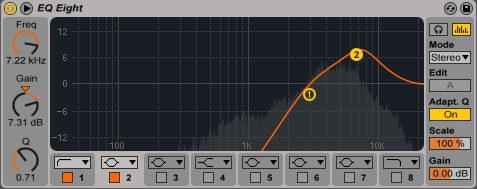
I'm just going to add filtering for this sound - there's mostly just waterfall noise below 7kHz, and the sound of the cicadas seems to be entirely above that. So, I can high pass filter the recording at around 3kHz (the frequency curve with my slightly low Q setting starts rolling off from 7kHz this way) and retain most of the cicada sound:
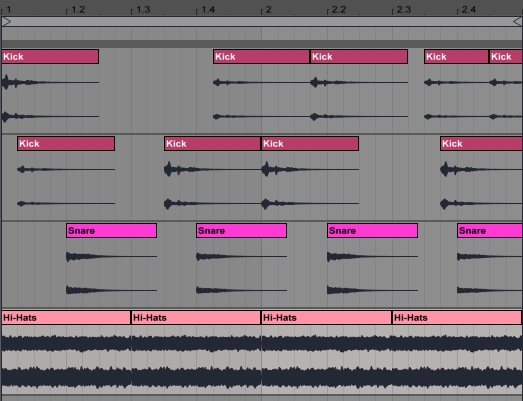
The Beat: Bringing It All Together
These kinds of dirty, grainy samples tend to sound like they've been resampled and abused - or in other words, perfect for hip hop! So, want to know what a beat with these samples sounds like' Here we go:
Pretty cool, huh'! A beat that sounds quite unlike any other and all crafted from snippets of field recordings!
To develop things further a bit, I can chuck in some bass and chord loops from our Escape library and we're well on our way to creating a crunchy, smoky track in no time:
From this point we could add some compression to boost up the weight of the drum beat, even adding some extra transient shaping on a master drum bus to sharpen the attacks further and so on - but I'll leave the rest up to you!
I hope this quick demonstration gives you some ideas about how you can think outside the box when using field recordings in your own work. Don't forget to check out the free sounds used in the tutorial below and until next time, get creative!














